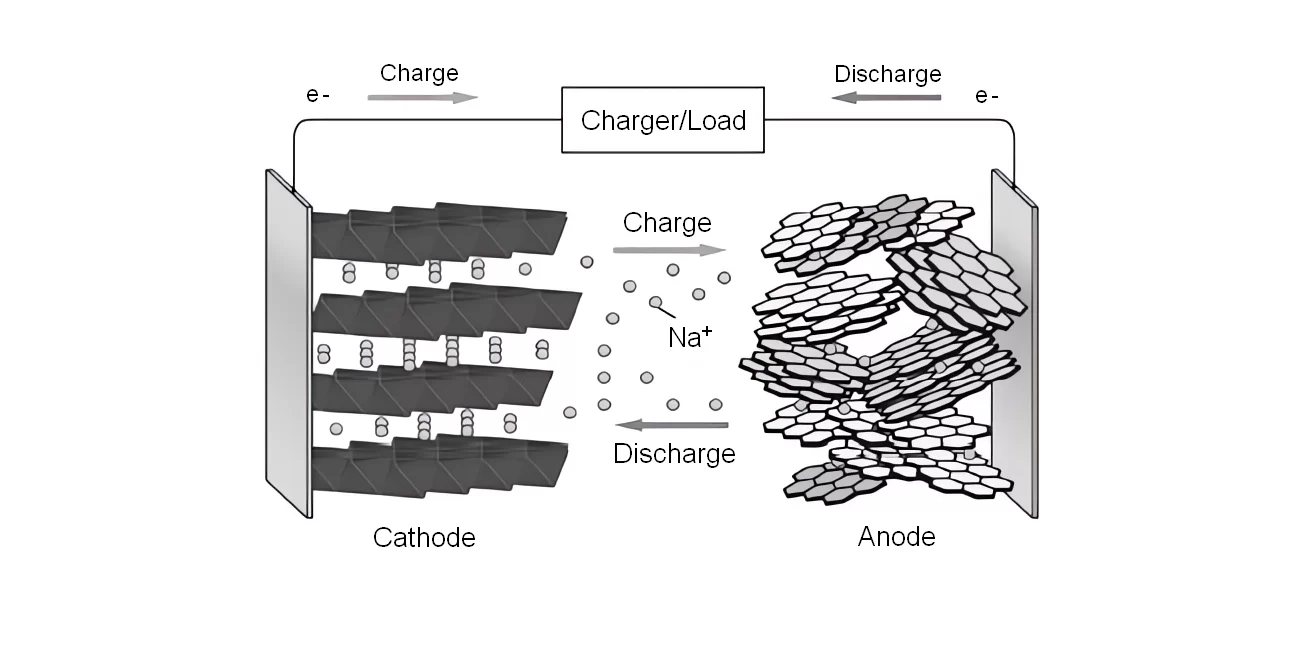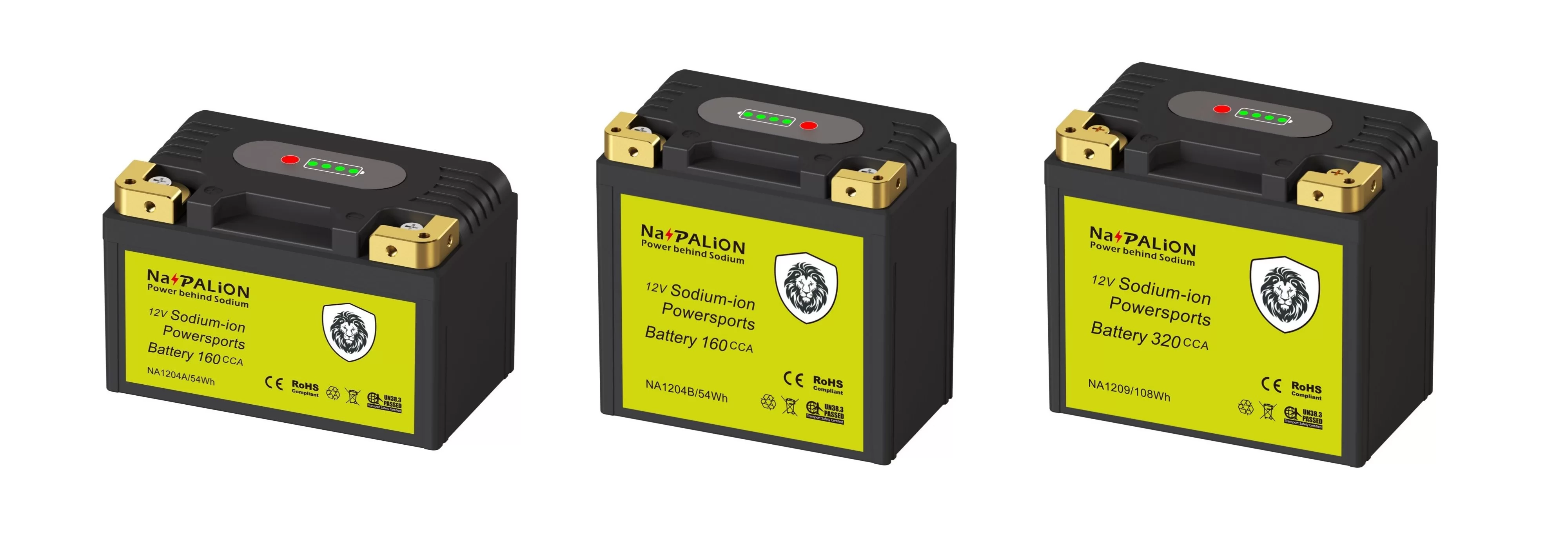Lead acid battery has been dominated the powersports battery market for more than one century. Lithium-ion battery is not good at cold-starting the engine and therefore cannot meet the requirements of starting batteries. Sodium-ion battery has excellent low-temperature discharge performance and can still meet the 10C discharge requirements even at -28 degrees Celsius. In terms of CCA performance, sodium-ion battery is even more advantageous than lead acid battery.
Lead acid battery should strictly avoid over-discharge to prevent irreversible loss on capacity. Whilst Sodium-ion battery is not afraid of over-discharge and can be discharged to 0V, there will be no loss of capacity after recharging. Lead-acid battery usually need to be charged every 3 months to keep the performance, while sodium-ion battery can extend the charging time to 12 months.
The abundance of sodium in the earth's crust is 2.3%, ranking sixth among all elements, significantly higher than 0.0017% of lithium. Sodium is widely found on land and in the ocean in the form of salt and is easy to obtain. Compared with lead-acid battery, sodium-ion battery is eco-friendly. Sodium-ion battery does not contain any heavy metals and are 100% recyclable.
Why and how we designed the innovative and amazing
sodium-ion batteries for powersports?
Believe it, before you see it.
We believe sodium-ion batteries will change the market landscape for powersports.
Sodium-ion Batteries 101
Sodium-ion battery is a secondary battery that mainly relies on the movement of sodium ions between the positive and negative electrodes to work. It has a similar working principle to lithium-ion batteries, and both are called "rocking chair" batteries.
The main components of sodium-ion batteries are positive electrode, negative electrode, separator, electrolyte and current collector, among which the structure and performance of the positive and negative electrode materials determine the sodium storage performance of the entire battery. The positive and negative electrodes are separated by a separator to prevent short circuits. The electrolyte infiltrates the positive and negative electrodes as a medium for ion flow, and the current collector plays the role of collecting and transmitting electrons. During charging, Na+ escapes from the positive electrode, passes through the separator and embeds into the negative electrode, so that the positive electrode is in a high potential sodium-poor state and the negative electrode is in a low potential sodium-rich state. The discharge process is the opposite. Na+ escapes from the negative electrode and passes through the separator and re-embeds into the positive electrode material, restoring the positive electrode to a sodium-rich state. In order to maintain charge balance, the same number of electrons are transferred through the external circuit during the charge and discharge process, and migrate between the positive and negative electrodes together with Na+, causing oxidation and reduction reactions at the positive and negative electrodes.

Sodium-ion Batteries Advantages
The abundance of sodium in the earth's crust is 2.3%, ranking sixth among all elements, significantly higher than 0.0017% of lithium. Sodium is widely found on land and in the ocean in the form of salt and is easy to obtain. Currently, the world's proven lithium resource reserves that can be exploited can only satisfy 1.48 billion electric vehicles. As global electrification accelerates, the pressure of lithium resource shortage is further reflected.
After the sodium-ion battery has undergone short-circuit, nail, crush and other tests, there is no fire or explosion. Lithium-ion batteries have the problem of over-discharge, which will cause the copper foil current collector to dissolve, resulting in irreversible loss of battery capacity; while sodium-ion batteries have no over-discharge, and the positive electrode can be discharged to 0V without affecting performance, making the battery safer during storage and transportation. At the same time, sodium batteries are prone to passivation during thermal runaway, so they perform better in safety tests.
The high conductivity of sodium ions requires a lower concentration of electrolyte. The viscosity of the electrolyte at low temperatures is lower than that of lithium-ion batteries, and the overall performance of the battery is better. The normal operating temperature range of sodium-ion batteries is -40℃-60℃, and the capacity retention rate at -20℃ can reach more than 85%, which is significantly better than the 60-70% capacity retention rate of lithium iron phosphate.
To help customers understand the differences between sodium-ion battery and lead-acid battery, the NA1205A is compared with a typical lead acid YTX20HL-BS battery as follows:
Item | NA1205A | YTX20HL-BS |
Battery Chemistry | Sodium | Lead |
Nominal Voltage | 12V | 12V |
Energy Density | 72Wh/kg | 20Wh/kg |
Energy | 61.2Wh @ 1C discharge | 133Wh @ 1C discharge |
Heavy Metals | Eco-friendly | Lead |
Weight | 1.35kg | 6.8kg |
Charge Temperature | 0 ℃ < T < 55 ℃ | -20 ℃ < T < 50 ℃ |
Discharge Temperature | -30 ℃ < T < 60 ℃ | -20 ℃ < T < 50 ℃ |
Over-discharge | As low as to 0V | 10.5V |
Storage Without Maintenance | 12 months | 3 months |
Cold Cranking Amps (CCA) | 320 | 310 |
Life Cycle | 2,000 | 500 |
Cost Per Use | $0.05 | $0.2 |
What are the applications of NaPALION powersports batteries?
NaPALION powersports batteries are designed for drop-in replacement with lead acid batteries on Motorcycles, ATVs, UTVs, Jet Skis, Snowmobiles and Lawn Tractors. The high performance of NaPALION powersports batteries will make a great customer experience.

Find out your requested sodium-ion powersports battery in our 2025 catalog.
If you cannot find the proper model. Please leave message today to customize your battery.






